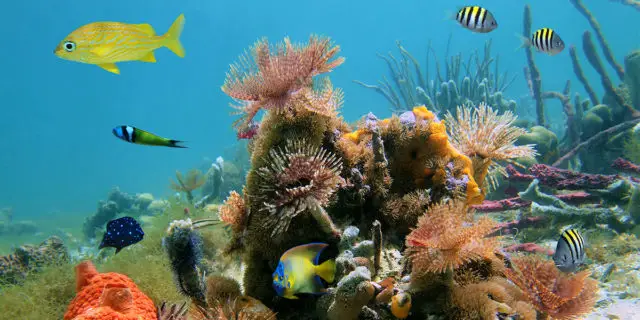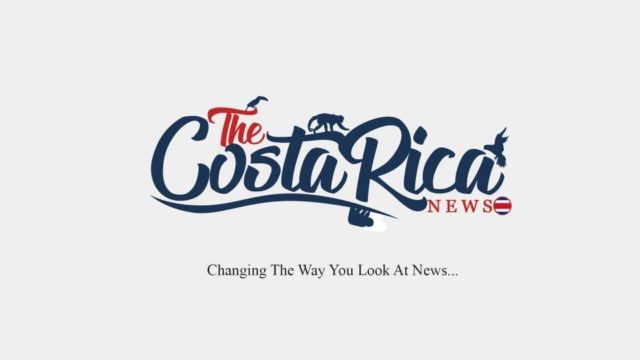As citizens, we mostly know the value of our natural resources, but most of the time we do not know the actual status of these possessions. This is happening with the Protected Areas of Cocos Islands, mainly their reefs.
Cocos Islands are a National Park since 1978 and the Natural Heritage of Humanity since 1997. It is home to thousands of species of flora and fauna. Regarding the coral reefs, it is known as one of the most valuable and biologically diverse ecosystems on earth, they function as a center of marine life activity. Experts estimate that 25% of all marine life, which includes more than 4,000 species of fish, depends on coral reefs at some point in their life cycle.
Approximately 500 million people around the world depend on coral reef ecosystems for food, coastal protection and income from tourism and fishing. The reefs of Isla del Coco National Park have gone through a “whitening phenomena” (discoloration caused by the increase in water temperature, this entails the expulsion of symbiotic algae that give coral its color and nutrients), which have produced great mortality of marine life, many of them associated with the “El Niño” phenomenon (warming of the eastern equatorial Pacific).
For example, El Niño from 1982-1983 produced one of the greatest coral mortalities, leaving only 3.5% alive. However, the data shows a high recovery of coverage after bleaching events, which currently remains one of the main threats given the increase in the average temperature of the sea and the increase in the frequency of natural events such as El Niño.
Corals of the Isla Del Coco National Park.

It has one of the most diverse and best-preserved coral reefs in Costa Rica. The fish community of Isla del Coco National Park is represented by a large number of carnivorous species, followed by top predators, herbivores and planctivores. In general, these reefs are healthy, with complex and functional trophic chains; where species of high commercial value are in good condition. The coral and rocky reefs of the island have one of the largest fish biomass found in the Eastern Tropical Pacific, which places the National Park as one of the most important sites for marine conservation in the region, especially for those species of high fishing pressure. In these reefs there is a great abundance of top predators, such as sharks, representing a high degree of health in these ecosystems, maintaining trophic networks (food web or food cycle with graphic representation, who feed in the ecological community) in equilibrium.
According to studies these reefs have been widely analyzed since the 1980s, but these investigations have focused on the coral cover (e.g. Guzmán & Cortés 1992; Cortés & Guzmán 1998). The results of Alvarado et al. (2015) detail the composition of fish and invertebrates, as well as the reef complexity. “Diadema mexicanum” was the only predominant species. Highlighting the density of lobsters of the genus Panulirus as the highest in the Eastern Tropical Pacific, as well as the sea cucumber (Isostichopus fuscus) which has a high commercial value.
When comparing the work carried out from 1987 to the present, the recovery in live coral cover over time is evident, mainly due to:
1) A decrease in the pressure of the bioerosive action of sea urchins D. mexicanum;
2) Conservation measures that have been imposed on the island.
This has favored that the reefs become more complex and rugged.
In February of the present year 2019, an alliance was created for the ecological restoration of Isla Del Coco. The Minister of Environment and Energy, Carlos Manuel Rodríguez, signed an agreement for joining efforts to help carry out the ecological restoration projects in the Isla del Coco National Park (PNIC). It was an agreement signed between the Ministry of Environment and Energy (MINAE), in addition to the Island Conservation organization and the Costa Rica Forever Association (ACRXS), who would be in charge of management activities, scientific research, planning, and communication. According to statements by the Minister, each process works hand in hand with park rangers and other collaborators who perform various tasks tirelessly for the safety and health of the Island.
Also in mid-July of this year, they announced that the School of Biological Sciences in the Marine Biology area of the National University (UNA) in collaboration with the Park Rangers of the Isla del Coco National Park investigated from 2018, for evaluating the health status of the rocky reefs. According to official information, during the investigation, monitoring was carried out using autonomous diving equipment at the main coral reef sites: Roca Sucia, El Risco, Punta Ulloa, Juan Bautista, Punta Presidio in Weston Bay, Chatham Bay, Sugar Loaf and Manuelita Somero. The purpose of the project is to develop a series of indicators that serve as a parameter to assess the health status of rocky reefs and thus provide the necessary tools to make recommendations for the management of marine resources.
On the other hand, Isla Del Coco was nominated for the “Global Ocean Refuge” award, one of only ten marine protected areas that have received this recognition. During 2018, Amigos Isla del Coco (Faico) initiated a joint effort with the Cocos Marine Conservation Area (ACMC), National System of Conservation Areas (Sinac), the Ministry of Environment and Energy (Minae), to nominate the Isla del Coco National Park (PNIC) as a candidate for the “Global Ocean Refuge” award. Achieving this nomination in March of this year.
Recently, it was known that Costa Rica or Isla Del Coco received the International Award “Blue Park”, this award is an initiative developed by the Marine Conservation Institute that encourages Marine Protected Areas that meet certain standards of effectiveness and management, to be part of a network of marine areas recognized for their conservation management. The nomination allows publicizing these areas internationally.
It should be noted that the renowned media outlet “The Economist”, made at the end of 2018, a documentary about the Cocos Island and Protected Areas of the Galapagos Islands, how they could be better managed to protect the ocean against human damage and the impact of climate change.

